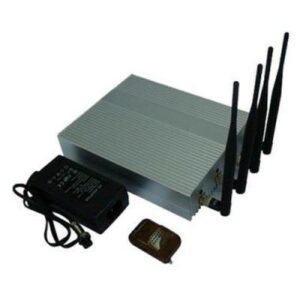In the intricate web of the internet, where every website, application, and online service is identified by a unique address, the Domain Name System (DNS) serves as the digital phonebook that translates user-friendly domain names into machine-readable IP addresses. This fundamental process enables seamless communication between devices connected to the internet and plays a pivotal role in the functionality of our online experiences.
Understanding DNS settings on your router is paramount as it directly impacts the efficiency, security, and privacy of your internet browsing. In this article, we’ll delve into the essentials of DNS settings on routers, exploring their significance and how they influence your online activities.
Understanding DNS Settings

At the heart of the internet lies the Domain Name System (DNS), a decentralized hierarchical naming system that translates human-readable domain names (like example.com) into IP addresses (like 93.184.216.34), allowing devices to locate and communicate with each other across the vast digital landscape.
- Compatible with major cable internet providers including Xfinity, Spectrum, Cox and more. NOT compatible...
- [Compatibility] 12V Power Supply Adapter Compatible with Netgear, Linksys, Asus,Motorola, Motorola/Arris...
Overview of DNS Resolution Process
When you type a website address into your browser’s address bar, your device sends a request to a DNS server, asking for the corresponding IP address. The DNS server then queries other DNS servers in a hierarchical manner until it finds the IP address associated with the requested domain name.
Once the IP address is obtained, your device can establish a connection to the desired website or online service.
Role of DNS Servers
DNS servers act as the intermediaries between users and the vast array of websites and online services available on the internet. They store vast databases of domain names and their corresponding IP addresses, enabling quick and efficient resolution of DNS queries.
Additionally, DNS servers may cache recently resolved DNS records to expedite future requests and reduce the load on the DNS infrastructure.
Primary and Secondary DNS Servers
Each network, including your home or office network, typically has one or more DNS servers configured to handle DNS queries. These DNS servers may be designated as primary and secondary servers, providing redundancy and fault tolerance in case one server becomes unavailable. Configuring primary and secondary DNS servers on your router ensures reliable DNS resolution and uninterrupted internet connectivity.
Stay tuned as we explore the benefits of custom DNS settings and how to optimize them for an enhanced browsing experience in the upcoming sections.
Benefits of Custom DNS Settings
Configuring custom DNS settings on your router offers several advantages that can enhance your browsing experience and improve the overall performance of your network.
Enhanced Performance
By using custom DNS servers, you can potentially improve the speed and responsiveness of your internet connection. Some third-party DNS providers offer faster response times compared to default DNS servers provided by your Internet Service Provider (ISP), resulting in quicker website loading times and reduced latency.
Improved Security
Custom DNS servers can also enhance the security of your network by providing additional protection against malware, phishing attacks, and other online threats. Some DNS providers offer built-in security features such as DNSSEC (Domain Name System Security Extensions) and filtering of known malicious domains, helping to safeguard your devices and data from cyber threats.
Enhanced Privacy
Privacy-conscious users may opt for custom DNS servers that prioritize user privacy and data protection. Unlike default DNS servers provided by ISPs, which may log DNS queries and track user activity for various purposes, some third-party DNS providers adhere to strict privacy policies and do not retain personally identifiable information. Using these privacy-focused DNS servers can help mitigate privacy risks and enhance your online anonymity.
How to Configure DNS Settings on Your Router
Configuring DNS settings on your router is a relatively straightforward process that can be done through the router’s web-based administration interface. Here’s a step-by-step guide to configuring DNS settings on popular router brands:
Accessing the Router Settings
- Open a web browser on a device connected to your home network.
- Enter the router’s IP address into the address bar and press Enter. (The router’s IP address is typically printed on the router itself or provided in the router’s documentation.)
- Log in to the router’s administration interface using your username and password. (If you haven’t changed the default credentials, refer to the router’s documentation for the default login credentials.)
Configuring DNS Settings
- Navigate to the DNS settings or network settings section of the router’s administration interface.
- Locate the fields for primary DNS server and secondary DNS server.
- Enter the IP addresses of the custom DNS servers you wish to use. (You can use public DNS servers provided by third-party DNS providers such as Google DNS, Cloudflare DNS, or OpenDNS. Refer to the DNS provider’s documentation or website for the IP addresses of their DNS servers.)
- Save your changes and restart the router if necessary to apply the new DNS settings.
By following these steps, you can configure custom DNS settings on your router and enjoy the benefits of improved performance, security, and privacy while browsing the internet.
Stay tuned for the next sections, where we’ll explore common issues with DNS settings and how to troubleshoot them effectively.
Common Issues with DNS Settings
While configuring custom DNS settings on your router can offer numerous benefits, it may also lead to certain issues that can affect your browsing experience. Here are some common issues associated with DNS settings on routers:
DNS Resolution Failures
Sometimes, DNS resolution failures occur due to misconfigured DNS settings or problems with the DNS servers themselves. This can result in the inability to access certain websites or services, as the DNS server fails to resolve domain names to their corresponding IP addresses.
Slow DNS Response Times
Slow DNS response times can cause delays in website loading times and overall sluggishness in internet connectivity. This issue may occur if the chosen DNS servers are experiencing high levels of traffic or if there are network issues affecting DNS resolution.
DNS Hijacking
DNS hijacking occurs when a malicious actor intercepts DNS queries and redirects them to fraudulent or malicious websites. This can lead to security risks such as phishing attacks, malware infections, and identity theft. While uncommon, DNS hijacking can occur if the chosen DNS servers are compromised or if the router itself is targeted by attackers.
Troubleshooting DNS Issues
If you encounter issues with DNS settings on your router, there are several troubleshooting steps you can take to diagnose and resolve the problem:
Verify DNS Server Configuration
Double-check the DNS server configuration on your router to ensure that the correct IP addresses are entered for the primary and secondary DNS servers. Incorrectly configured DNS settings can lead to DNS resolution failures and other issues.
Test DNS Servers
Use online tools or command-line utilities to test the performance and reliability of the DNS servers you’re using. Look for any signs of high latency, packet loss, or unresponsiveness that may indicate problems with the DNS servers themselves.
Clear DNS Cache
Clearing the DNS cache on your router can help resolve DNS resolution issues and refresh stale DNS records. Seek your router’s documentation or administration interface for instructions on how to clear the DNS cache.
Restart Router
Sometimes, simply restarting your router can resolve DNS-related issues by resetting network connections and clearing temporary configuration errors. Power cycle your router by unplugging it from the power source, waiting for a few minutes, and then plugging it back in.
Contact ISP or DNS Provider
If you’re unable to resolve DNS issues on your own, consider contacting your Internet Service Provider (ISP) or DNS provider for assistance. They may be able to troubleshoot network issues, provide guidance on configuring DNS settings, or offer alternative DNS servers to use.
By following these troubleshooting steps, you can effectively diagnose and resolve common DNS issues on your router, ensuring a smooth and reliable browsing experience for all your devices.
Conclusion
In conclusion, understanding and configuring DNS settings on your router is essential for optimizing your internet connectivity and browsing experience. By utilizing custom DNS servers, you can potentially improve website loading times, enhance security and privacy, and bypass geographical restrictions.
Throughout this article, we’ve explored the significance of DNS settings on routers, discussed the benefits of using custom DNS servers, and highlighted common issues that may arise. We’ve also provided troubleshooting steps to help you address DNS-related issues effectively.
As you manage DNS settings on your router, it’s important to strike a balance between performance, security, and usability. Regularly monitor DNS performance, stay informed about DNS-related threats, and keep your router firmware up to date to ensure optimal functionality.
By following best practices and troubleshooting guidelines, you can harness the power of DNS settings to create a seamless and secure browsing experience for yourself.
Remember, your router’s DNS settings play a crucial role in shaping your online experience, so take the time to configure them thoughtfully and monitor their performance regularly. With the right DNS configuration, you can enjoy faster, more reliable internet access and better protect your privacy and security online.
Thank you for joining us on this journey to explore DNS settings on routers. We hope you found this article informative and helpful in optimizing your internet browsing experience.
Stay connected, stay secure, and happy browsing!





